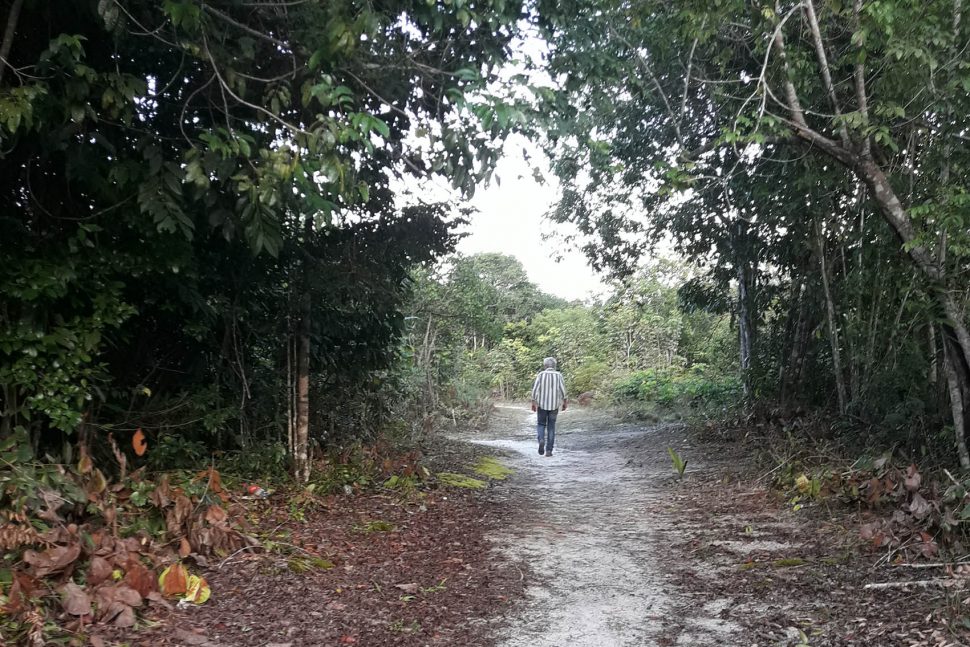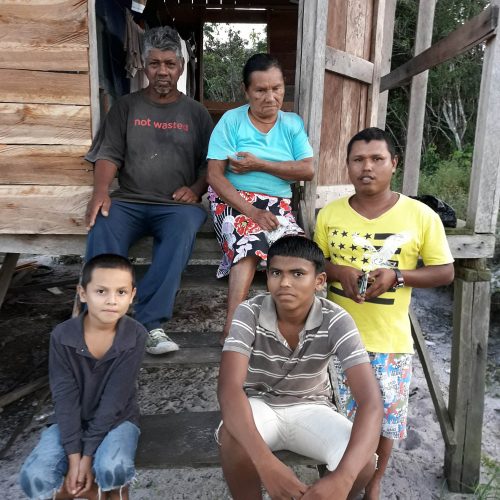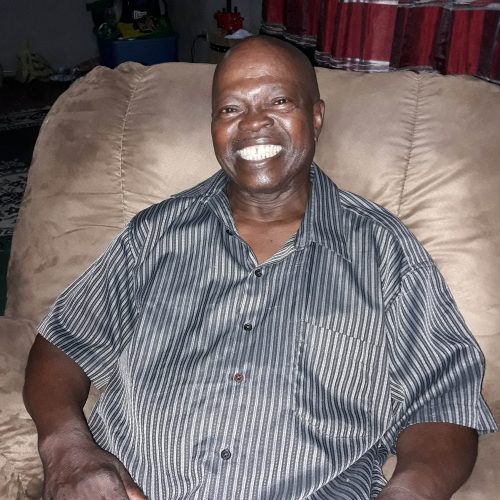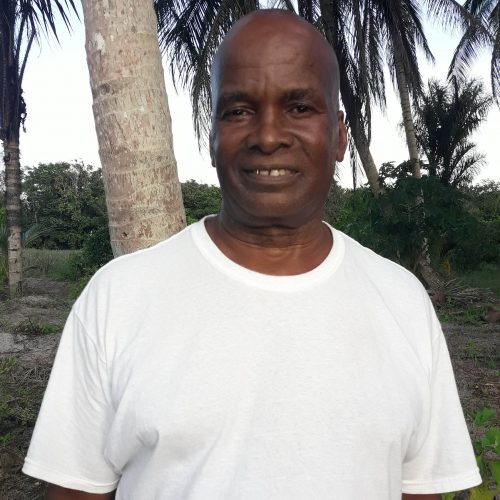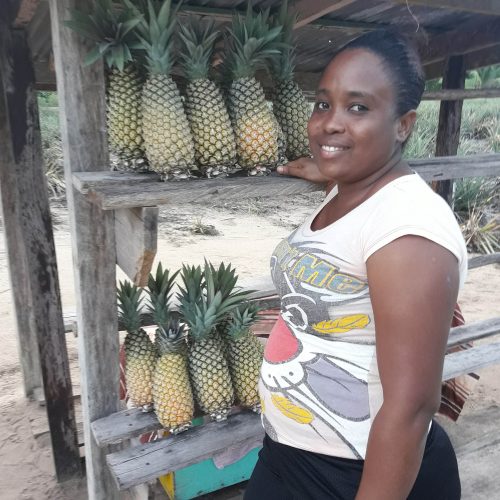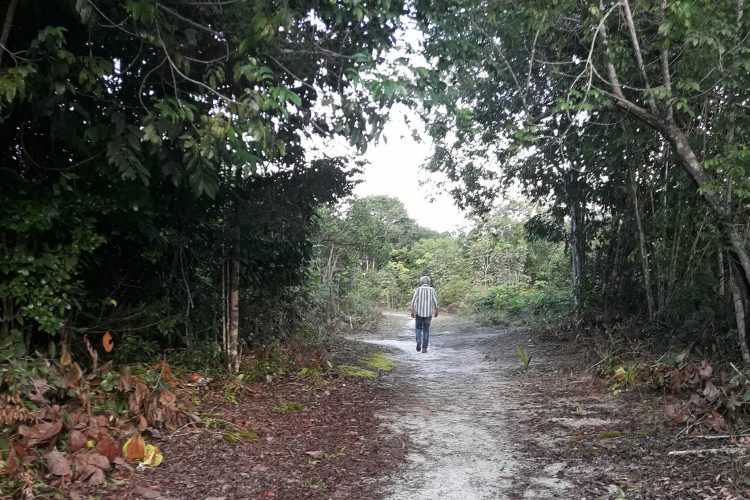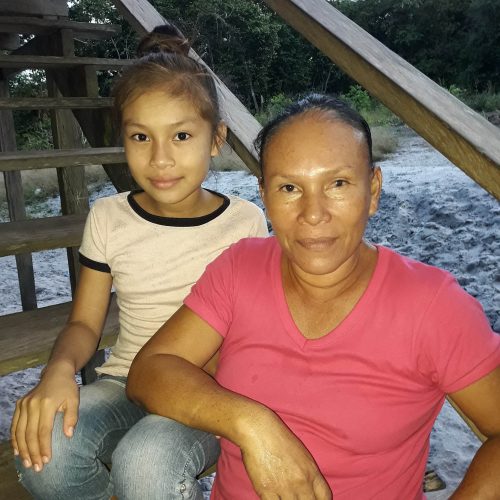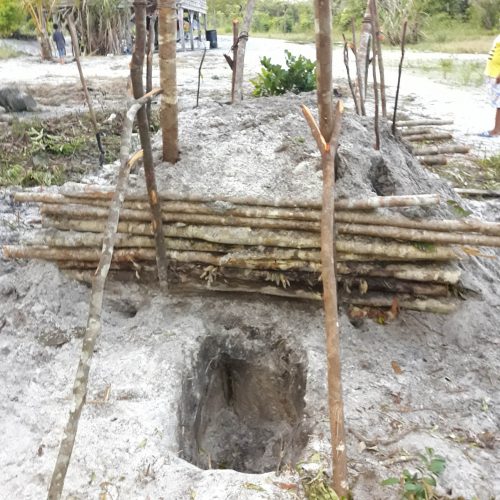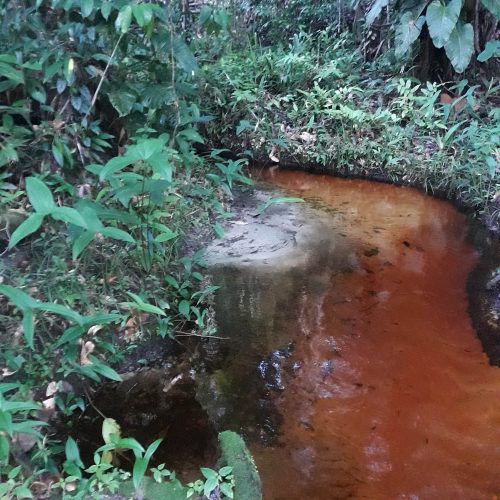Adventure on the Linden/Soesdyke High-way is a mixed community with a large percentage of Amerindians. At a first glance, the village seems sparse, but its people live in a spread-out area; many houses are hidden among the trees and many residents live closer to the river’s edge two miles from the highway.
Right on the road there are a few small stalls selling pineapples, one of the most commonly grown plants here. A house directly behind these stalls belongs to Cloyde Carryl, who was working on his farm when I arrived.
Carryl hails from Canal Number One Polder and lived for some time in the United States of America, but prior to moving there he had bought a piece of land along the highway in 1980. He migrated to the US seven years later and moved back in 1995 to develop the land, which turned out to be located in Adventure.
Before settling in the village for good, he had worked the land for ten years planting mostly pineapples, the ideal crop for a farmer who was not living on the land. “Pineapples is a tough crop. I don’t need to water them; they hold the rainwater in their leaves,” Carryl said. Along with the pineapples he also planted bitter cassava and plantains.
For the first few years while living in Adventure, Carryl would find his way down to the creek and return with 5-gallon jars of water in his wheelbarrow. However, he no longer has to do that. Realizing that a spring situated on his land could benefit him and others, the man had the water tested by the Government Analyst Food and Drugs Department, then approached the Environmental Protection Agency and other agencies to secure permission to build a factory. All of this, he said, took him a full year and he was finally able to open his business in 2008.
He noted that the Food and Drugs Department said the water coming from the spring has a pH of 13, whereas the highest is 14. Water with a pH of less than 7 is considered high in acidity, while once it is above 7, it is more alkaline. Researchers have said that water high in alkaline is considered to be healthy.
Carryl further said that his Mora Spring bottled water goes through a chemical-free sterilization process. He distributes to various shops in and outside of Linden and also sells retail.
“When I think back to the days of getting water from the creek, I thank God every day for the spring,” he said. The spring, he said, had always been there but it is situated further away than the creek, so he rarely went there for water. Once his operation was set up, however, it became that much easier. Water is brought out by truck. Currently, Mora Springs water is only sold in 5-gallon bottles. He hopes to start producing smaller bottles soon.
Even with the spring and creek, Carryl said, water is one of the challenges the village faces, and he hopes that potable water would be made available soon.
Carryl still plants pineapples, though on a smaller scale, as well as peppers, avocadoes and a few other plants here and there. Transportation used to be a major issue, he said, but has improved somewhat. There are four minibuses buses and two cars plying the route from Kairuni (the village before) to Linden. He wishes for the village to have a community centre and electricity.
Carryl further said that the people of Adventure mostly do coal mining, but he hopes to see them farm more of the land.
Sixty-nine-year-old Paul Boodram stood at the side of the road with his family looking for customers to sell their coals to.
He accompanied me to the creek to show me where they get water for washing and bathing. His wife, who has been blind for almost 40 years, was just returning from the creek.
Boodram moved to Adventure in 1977; the highway was a decade old then. He had applied to the Guyana Lands and Surveys Commission for the land he lives on and paid $50 a year then; he isn’t required to pay anymore.
The man who hails from New Amsterdam said he met his wife on a work trip to Port Kaituma. He has always liked rural life and said it is comfortable. Boodram likes that where he lives is a bit secluded and the neighbours, although short distances away, cannot be seen clearly from his home.
He also farms and plants cassava, pineapple and pumpkin, which he would sell out on the highway from time to time. He wishes for the community to have landline phones.
Boodram’s daughter Paula Maraj lives a short distance away. She was born in the North West District. Her parents moved to the highway when she was seven years old. She attended Silver Hill Primary School with her brothers; her two youngest children now go there.
As a little girl, she accompanied her parents and brothers in the forest when they went hunting for armadillos and turtles. It was always exciting, she said, adding that she and her brothers were always off hunting or catching fish.
“Growing up in Adventure was hard. We studied using the flambeau for light and all we had was the creek. Sometimes when the rain fall, we catch water to drink,” she said.
She visits Linden once a week to purchase groceries, mostly on Saturdays, and on Sundays she attends the Silver Hill Assembly of God Church.
While on the one hand she felt it was good not to have to pay electricity and phone bills, on the other, Maraj longs to have a fridge. She has a single solar panel on top of her house and uses the power to charge cellular phones. Apart from electricity, the woman wishes for potable water and for the residents of Adventure to be given their land titles.
In front of her yard, is a coal pit; her family burns coals on a part-time basis and sell them at $1,000 a bag. Her husband works in the interior. Employment poses another challenge for the people of Adventure and the other villages along the highway, Maraj said, but she would not trade it for the world.

